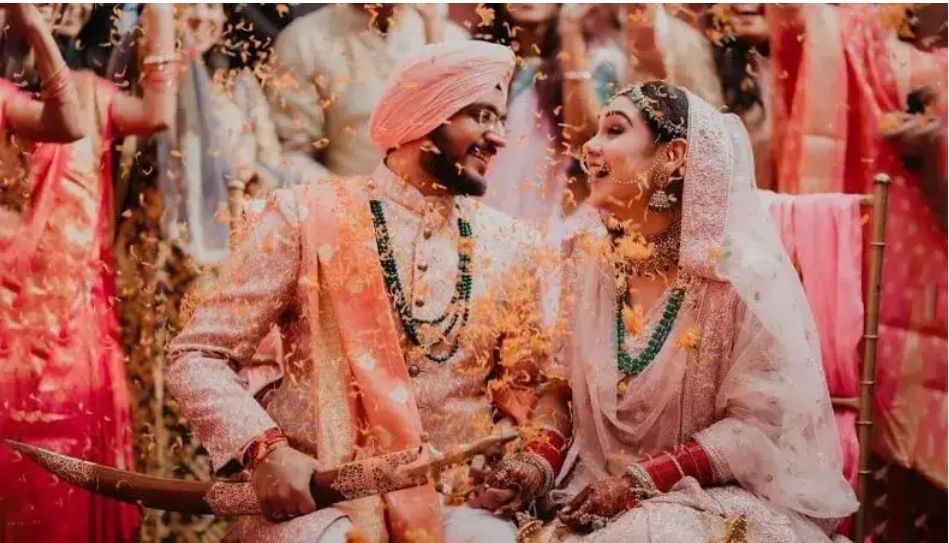In different global cultures, marriage stands as a vibrant thread, weaving together diverse traditions and rituals. From elaborate ceremonies to intimate exchanges, each culture offers its unique interpretation of love and commitment. Join us as we delve into these rich cultures, and learn more about celebrating the beauty and significance of varied matrimonial customs.
Uniting Souls with Tea in China
Have you heard about the Tea Ceremony? Tea Ceremony is a ceremonial practice that embodies deep-seated values of reverence, appreciation, and familial unity. Its origins can be traced back to ancient philosophies like Confucianism, emphasizing notions of respect for elders and familial duty. During the Tea Ceremony, meticulous attention is paid to the preparation of tea, often incorporating ingredients like lotus seeds and red dates, each carrying symbolic representations of fertility and the sweetness inherent in marital bonds. Through their participation in this ritual, the newlyweds express their commitment to honoring and perpetuating familial customs and principles, thereby strengthening connections across generations.
The Joyful Sama of Brazil
In Brazil, the festivities of weddings pulsate with the infectious rhythm of the Samba dance, a dynamic expression of jubilation and festivity. A distinctive tradition within Brazilian nuptials is the enchanting Bumba Meu Boi custom, where the bride and groom lead a vibrant procession. This ritual signifies their embarkation on a new journey of love, merriment, and communal harmony. Amidst their joyful dance through the thoroughfares, they are enveloped in a cascade of blessings and good wishes from acquaintances, loved ones, and onlookers alike. The resonant cadence of samba reverberates with the essence of affection, binding individuals from diverse backgrounds in a collective revelry of romance and life’s splendor.
Honoring Ancestors with the Korean Pyebaek Ceremony
In Korean wedding customs, the Pyebaek ceremony holds a special place, providing a moment of deep respect and remembrance for the couple’s forebears. This reverent practice occurs post the primary wedding proceedings and entails profound bows to the groom’s relatives, accompanied by offerings of nourishment and libations, reciprocated with heartfelt blessings. Through this homage to their ancestors, the couple endeavors to secure abundance and joy for their shared journey ahead. The symbolic significance of the offerings in the Pyebaek ceremony is profound, with elements like dates and chestnuts imbued with representations of fertility and enduring legacy.
Jumping the Broom in African-American Culture
The Jumping the Broom tradition holds a cherished place in African-American wedding customs, embodying the couple’s pledge to embrace change while discarding the old. Originating from ancient African rituals, wherein leaping over a broomstick marked the commencement of matrimonial union, this age-old practice resonates deeply in American culture, symbolizing fortitude, solidarity, and ancestral legacy. As the couple jointly vaults over the broom, they metaphorically transition into a fresh phase of their journey, symbolically transcending barriers between past and future as companions.
Finding Love in a Sea of Lanterns
In Taiwan, the Lantern Festival offers an enchanting setting for couples to convey their affection and aspirations for a radiant future together. This mesmerizing custom entails setting aloft lanterns adorned with personal sentiments and hopes into the evening sky, symbolizing the dawn of fresh opportunities and the release of anxieties. As these lanterns soar into the darkness, they craft a mesmerizing display, painting the heavens with a mesmerizing array of hues and motifs. The Lantern Festival serves as a tribute to luminosity, affection, and the limitless potential that lies ahead, prompting couples to treasure each instant and embrace the voyage they undertake in unison.
Exploring the Jewish Tradition of Ketubah
In Jewish matrimonial customs, the personalized Ketubah embodies profound significance as a sacred pact, delineating the commitments and entitlements of the couple. This exquisitely adorned parchment is endorsed by the bride, groom, and witnesses, frequently showcased prominently in their abode as a symbol of their mutual devotion. It stipulates the husband’s duties toward his wife, encompassing provisions for her material necessities and emotional welfare, while also affirming the wife’s entitlements and safeguarding within the union. Composed in Aramaic, the dialect of the Talmud, the Ketubah may feature personalized elements such as the couple’s names, wedding date, and additional particulars.
Cultural Fusion: Modern Trends in Global Wedding Traditions
In today’s interconnected global landscape, weddings often showcase a fusion of diverse cultural influences and customs. Couples are increasingly drawn to embracing multiculturalism, weaving together traditions and practices from various origins into their nuptial festivities. From eclectic culinary offerings to ceremonies blending different cultural nuances, contemporary weddings mirror the rich diversity of our world’s cultural mosaic. For instance, couples may opt to blend elements of Eastern and Western attire or meld traditional rites from disparate cultural heritages into their ceremonial proceedings.
This movement toward cultural amalgamation not only celebrates the beauty of diversity but also reinforces the timeless notion that love transcends boundaries, affirming marriage as a universally revered institution that unites despite cultural disparities.
Conclusion
In the culmination, amidst the diverse array of wedding customs, lies a shared essence: the jubilation of love, dedication, and the merging of hearts. Whether in vibrant embellishments or customary attire, whether amid intricate rites or modest proceedings, weddings stand as symbols of love’s universality, bridging cultures and fostering profound connections. Across the globe, love remains boundless, transcending cultural confines and bestowing its enduring grace upon all. By honoring the multitude of wedding traditions, we also honor the inherent unity that unites us, celebrating the resilience and splendor of humanity’s collective spirit.


